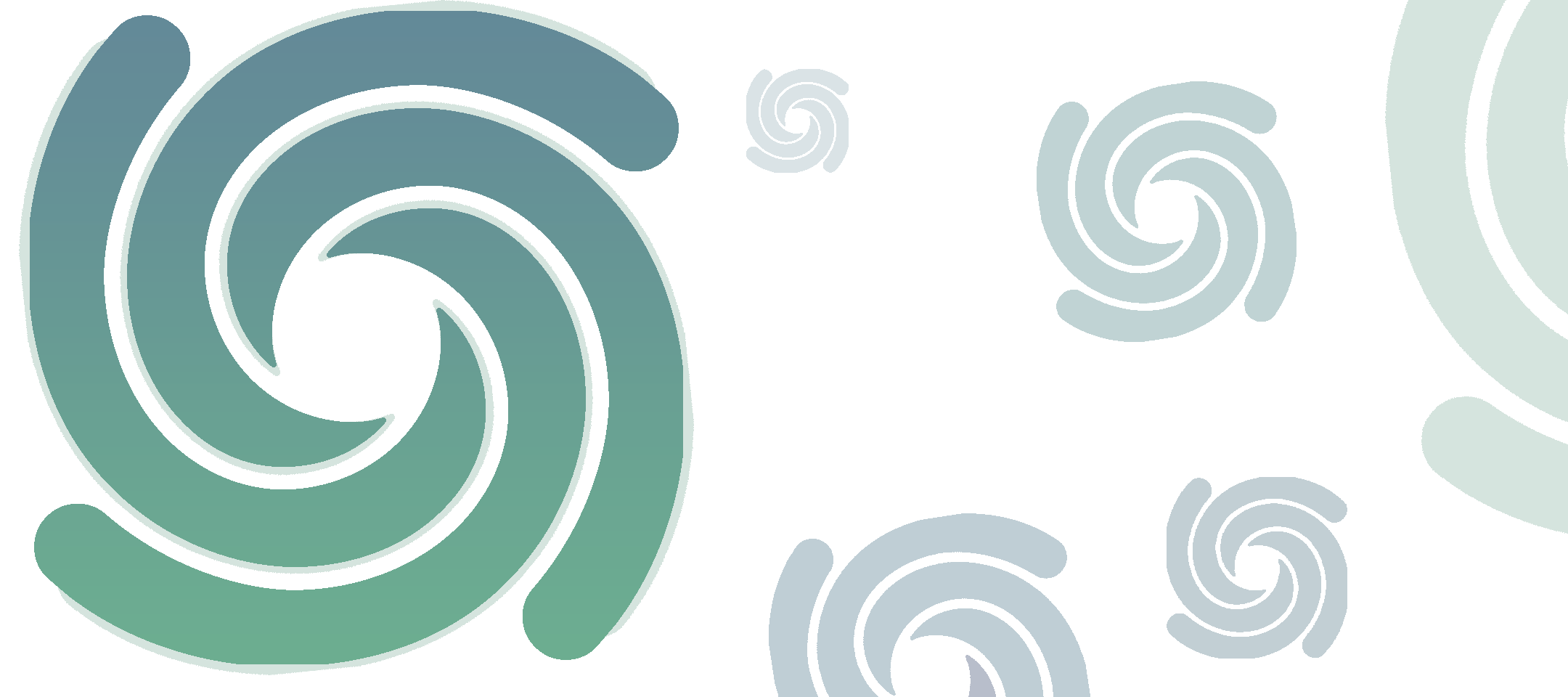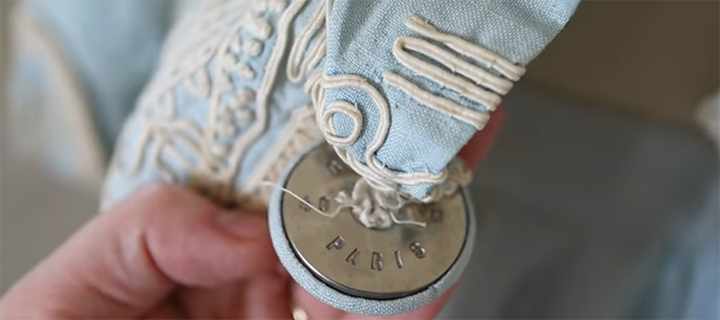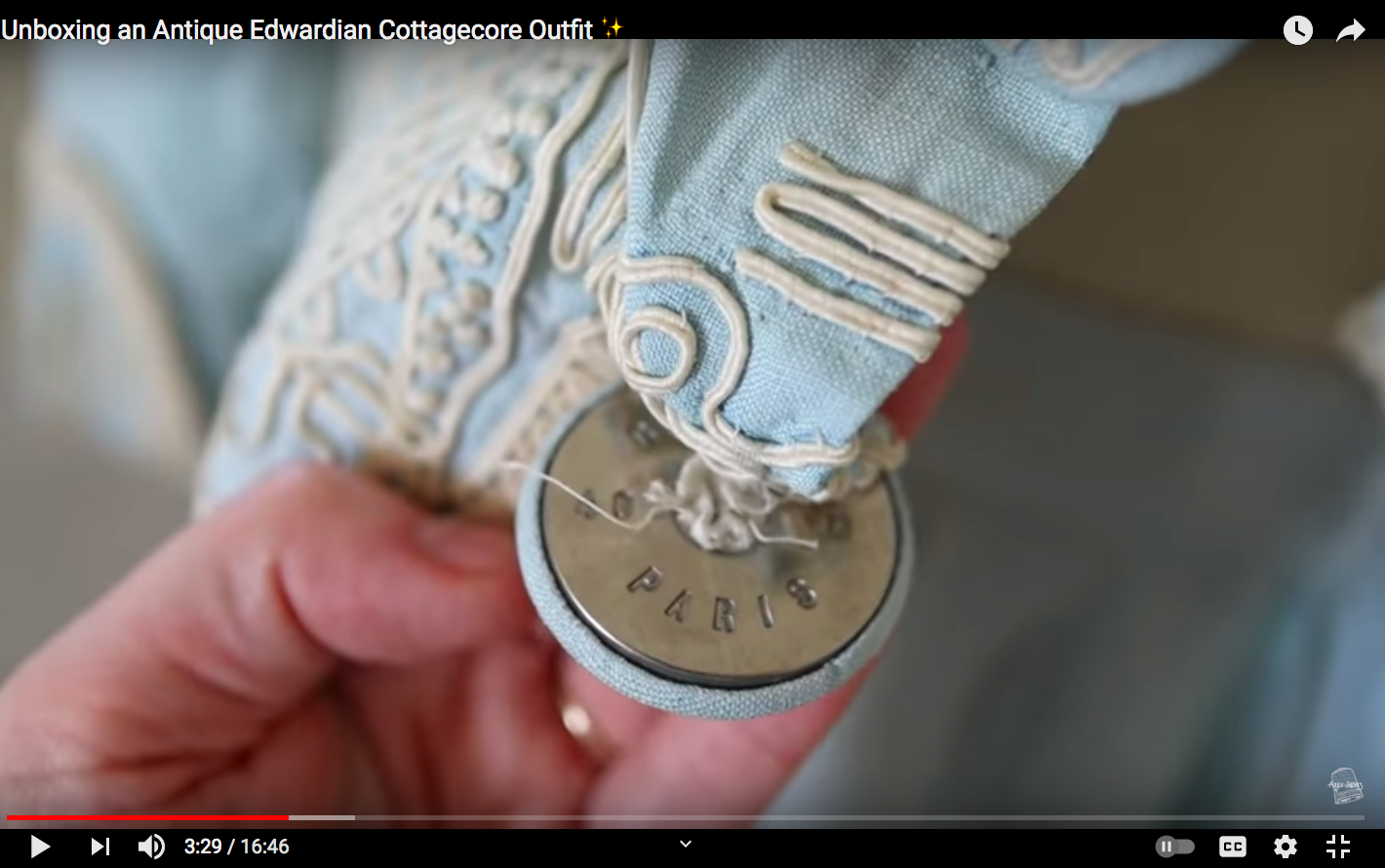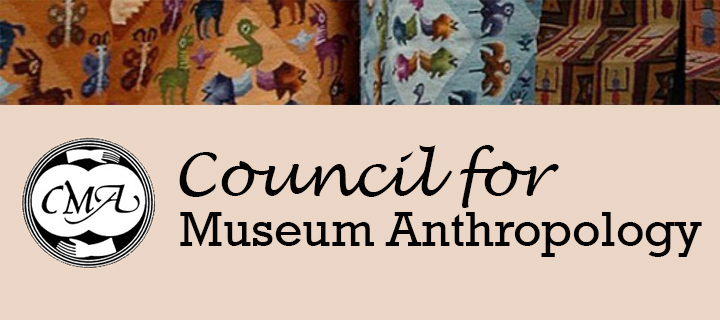[ad_1]
Article begins
Following the CMA’s second biennial conference, these reflections aim to continue conversations among cultural heritage professionals and academics.
In September 2019, the second biennial conference of the Council for Museum Anthropology (CMA) brought together 158 scholars, artists, and museum professionals working in institutions across the United States, Canada, the United Kingdom, Japan, and Australia. The conference gathered in O’gha Po’oge (White Shell Water Place) on Tewa lands, a place also called Santa Fe, New Mexico. The surrounding geographic region is home to nineteen Pueblo communities and many other Nations and tribes. The conference theme, “Museums Different,” intended to highlight the ways museums are increasingly embracing decolonial initiatives and attempting to reconfigure institutional structures to further inclusivity, equity, and ethical practice.
In 2020, the CMA board issued a call for the third biennial conference, but planning was suspended in light of the COVID-19 pandemic. Many CMA members have voiced a desire to return to an in-person conference when it is safe to do so, and CMA board members have been discussing timelines and approaches for a third conference. As CMA considers how future meetings will be planned and executed, there are important considerations from 2019 that can guide these decisions.
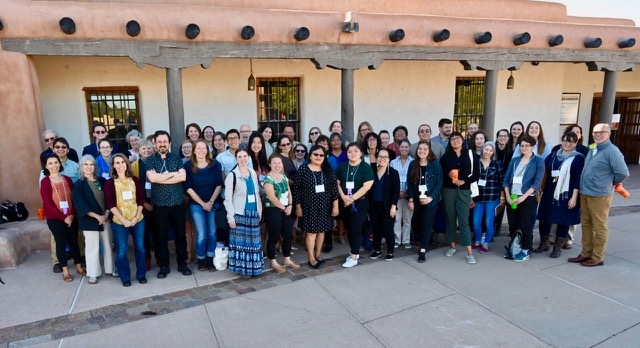
Group picture in front of the Museum of Indian Arts and Culture/Laboratory of Anthropology on the last day of the 2019 CMA conference.
This article aims to encourage reflection on conference organizing, thought that spurs deliberate action at future meetings. Some of the following points were accomplished to certain degrees at the 2019 CMA meeting, and I make these points to encourage replicating them at future conferences. Some of these ideas were developed during conversations I shared with colleagues at the conference and in the subsequent months following the meeting: Davina Two Bears, Elysia Poon, Felicia Garcia, Erin Monique Grant, Christopher W. Smith, and Emily Jean Leischner. The following points are not exhaustive, and institutional change to challenge and alter colonial structures is specific to a given organization and regional contexts.
Territory acknowledgements and land return
John Garcia (Santa Clara Pueblo) delivered an opening blessing at the start of the 2019 “Museums Different” conference: “This is a very special place in O’gha Po’oge.” Here, conference goers were in a position to acknowledge the land they were presenting on and consider why O’gha Po’oge is more often referred to as Santa Fe. Following this welcome, Lucy Lippard, a New Mexico art critic and curator, delivered the opening keynote asking artists and anthropologists to consider two questions: “Are you wanted here? By whom?” These messages prompted attendees to examine their ethics in past and present work.
Meaningful territory and land acknowledgements should be written and spoken at the opening of conferences. The 2019 CMA meeting included a conference-wide written acknowledgement (in print and online). Museums and cultural heritage institutions should implement these acknowledgements and also consider how they should be enacted within institutional processes. If these gestures are commitments to decolonial work, they should be accompanied by decisive actions—including, but not limited to, political, social, and economic support for the return of land. For further information and ideas, see the Guide to Indigenous Land and Territorial Acknowledgements for Cultural Institutions, the Native Governance Center Guide, the Resource Generation Land Reparations and Indigenous Solidarity Toolkit, Howie Echo-Hawk’s medium article “Fuck your land acknowledgement,” and Eve Tuck and K. Wayne Yang’s article “Decolonization is Not a Metaphor.”
Challenging extractive relationships
The final plenary of the 2019 conference responded to many of the ideas shared during the meeting. Organized by Conference Committee co-chair Bruce Bernstein, speakers included Governor Brian Vallo (Pueblo of Acoma), artist and curator Teri Greeves (Kiowa), independent scholar Tessie Naranjo (Santa Clara Pueblo), Assistant Director of Collections at the National Museum of the American Indian Cynthia Chavez Lamar (San Felipe Pueblo/Hopi/Tewa/Navajo), Poeh Cultural Center Collections Manager Lynda Romero (Pueblo of Pojoaque), and Director of the Navajo Nation Museum Manny Wheeler (Diné). Many of these panelists shared experiences negotiating repatriations and loans within settler colonial systems. For example, multiple panelists spoke about a long-term loan, in which one hundred ceramics traveled to the Poeh Cultural Center from the National Museum of the American Indian (NMAI), which Chavez Lamar chronicled in a 2019 article. Naranjo, Chavez Lamar, and Romero considered the impact of these pots returning to Tewa communities and lands but also the impact this loan had on NMAI’s institutional structures. Governor Vallo used the term “the cost of culture” to describe the monetary costs Indigenous Nations and communities pay to engage in repatriation work, highlighting ongoing extractive relationships. Speaking about the conference, Wheeler stated that non-Native people are the ones talking the most. Greeves expanded this sentiment, asserting that non-Native people need to be better listeners. While many sessions I attended during this conference included Indigenous presenters, most were chaired by settlers. How much active listening are these chairs doing in that role?
When planning conferences, organizing boards and committees should create systems whereby attendees from host communities or Nation(s) (Indigenous Nations/groups on whose traditional and ancestral territories the conference is taking place) do not have to pay registration fees to attend panels or present papers. Further, anyone that wishes to see a presentation, which includes information generated with or about themselves, their families, their Nations or communities, or a marginalized group they are affiliated with, should not have to pay attendance fees. According to the CMA Organizing Committee, no Indigenous attendees paid conference fees, a departure from the registration processes of many prior museum and anthropology meetings. Nevertheless, I understand some prospective attendees did not know until quite late that the CMA had scholarships available. Communicating this information effectively is crucial.
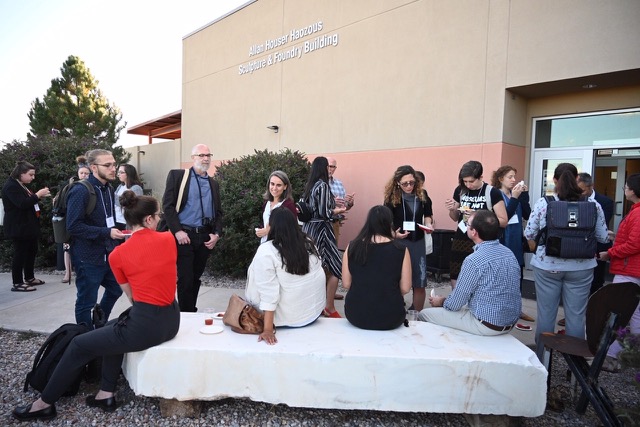
Conference attendees sharing food and conversation at the IAIA open house.
Likewise, certain institutions stewarding global Indigenous collections or Indigenous collections from North America do not charge admission/collections visit fees to those groups. The Museum of Anthropology at the University of British Columbia does not charge admission fees to Indigenous peoples. The Indian Arts Research Center at the School for Advanced Research does not charge tour/collections visits fees to Indigenous peoples of North America and they are open to waiving entrance fees to Indigenous peoples from other locations.
Strategic planning and organizing
Though I imagine this is a common experience for other conference organizing committees, I understand that the CMA Organizing Committee did not achieve successful, early preparations for every plenary session. Some plans fell through and some changes to plenaries occurred quite late. In the future, conference organizers may want to consider how an early lack of successful planning can determine who leads conversations during the conference. Unsuccessful preparations might mean settler professionals and scholars are leading plenary discussions when this was not intended. Organizing committees and boards should be aware of this when planning future meetings.
Further resources for museums, libraries, and archives
Throughout this piece, I have included links to sources that may be helpful for museum professionals and academics examining the organizations of which they are a part. With reference to archives, the “Protocols for Native American Archival Materials” bullets action items surrounding how archives, libraries, and Indigenous communities can build relationships of mutual respect, and work together to develop policies for accessibility, use, reproduction, and repatriation of materials. The American Philosophical Society Library’s “Protocols for the Treatment of Indigenous Materials” describes policies surrounding how library staff consult with Indigenous peoples, categorize archival materials as (possibly) culturally sensitive or not, screen requests to view these materials, and make decisions on whether or not to allow reproductions. With reference to museum collections, the Alutiiq Museum’s “Guidelines for the Spiritual Care of Objects” describes Alutiiq perspectives on ancestral materials and the museum’s approach to caring for these materials, delineating culturally appropriate stewardship. Within the “Shared Stewardship of Collections” guidelines, the Smithsonian Center for Folklife and Cultural Heritage expresses commitments to ensuring respectful collections management of and accessibility to the materials within the Rinzler Archives. Emphasizing how collaboration is an “ongoing proactive process,” this document articulates guiding principles about the shared authority of descendant communities for outlining appropriate care of collections and in ensuring respectful self-representations. These sources point to shifts toward increased community engagement and/or more socially responsible work occurring within museums.
Museums and social justice
There is more to museum social justice work than the conference focus. Most of the above points can also be considered in relation to BIPOC peoples broadly, those in economically precarious positions, LGBTQIA2S+ folks, those with disabilities, and other groups who are systematically oppressed. For example, the CMA “Museums Different” website and program does not include information about venue accessibility, which could be helpful for people with disabilities who are planning their conference travel. For further resources, see the “Social Justice and Museums Resource List.”
Monique Scott writes that “it is easier to critique than construct.” It is going to take more (de)construction to transform museums and academic organizations into different entities, ones that are socially and ethically responsible. Readers might consider the following questions: how can a given cultural heritage institution use resources and skills to support the priorities of those who see their ancestors’ works within collections? How can that institution build social, generative relationships over those based on property and extraction? When and where can settler professionals working at that institution listen more and listen better?
[ad_2]
Source link

